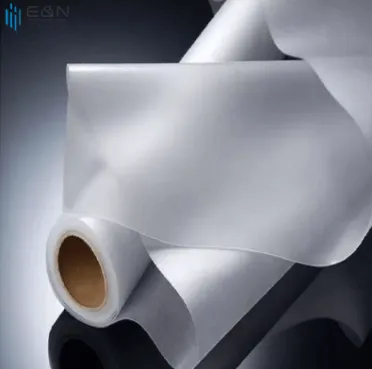The interlayer, laminating film, is a critical element in architectural glass applications. A thin, transparent material is sandwiched between two or more layers of glass to create laminated glass.
The main function of interlayer film is to give the glass structural stability and safety. In the case of a break, the film keeps the glass pieces together, avoiding damage caused by their dispersion. This makes laminated glass a well-liked option for uses, including windows, doors, facades, and car windscreens, where safety is a top issue.
When installing architectural glass, the interlayer film gives the following advantages:
One of the primary advantages of interlayer film is its ability to enhance safety and security. When glass with an interlayer film is subjected to impact or excessive force, the film holds the broken glass pieces together, preventing them from shattering and reducing the risk of injury.
Laminated glass can offer enhanced protection against flying debris in locations vulnerable to severe weather events, such as hurricanes or earthquakes.

The interlayer film can contribute to sound insulation by dampening and reducing noise transmission through glass. The film's viscoelastic properties help absorb sound waves, making laminated glass an effective solution for reducing unwanted noise pollution in buildings in busy urban areas or near airports, highways, or other noisy environments.
Interlayer films can be designed to offer high levels of ultraviolet (UV) protection. They can block a significant portion of harmful UV radiation from the sun, which helps to protect interior spaces and occupants from the adverse effects of UV exposure.
This feature is especially important in locations where excessive sunlight can lead to furniture, flooring, artwork, and other valuable items fading.
Laminated glass with interlayer film can contribute to improved energy efficiency in buildings. The film can be manufactured with specific properties that reduce solar heat gain, thus reducing the reliance on air conditioning and lowering energy consumption. The interlayer film also helps minimize heat loss during cold weather, resulting in improved insulation properties.
Interlayer films are available in various colors, patterns, and textures, allowing architects and designers creative freedom in their glass installations. These films can be customized to meet specific aesthetic requirements, offering a wide range of design possibilities for both exterior and interior applications.
The interlayer film also incorporates decorative elements or privacy features within the glass, providing functional and visually appealing solutions.
In high-security environments or areas at risk of terrorist attacks, laminated glass with specialized interlayer films can provide blast resistance.
These films are designed to enhance the structural integrity of the glass by absorbing and dissipating the energy generated during an explosion, thereby reducing the risk of injury from flying glass fragments.
The architectural glass incorporating interlayer film offers various benefits, including blast resistance, acoustic insulation, UV protection, energy economy, and safety and security. These advantages make laminated glass a desirable option for a variety of applications. You can get in touch with our experts to order the Interlayer film you need.